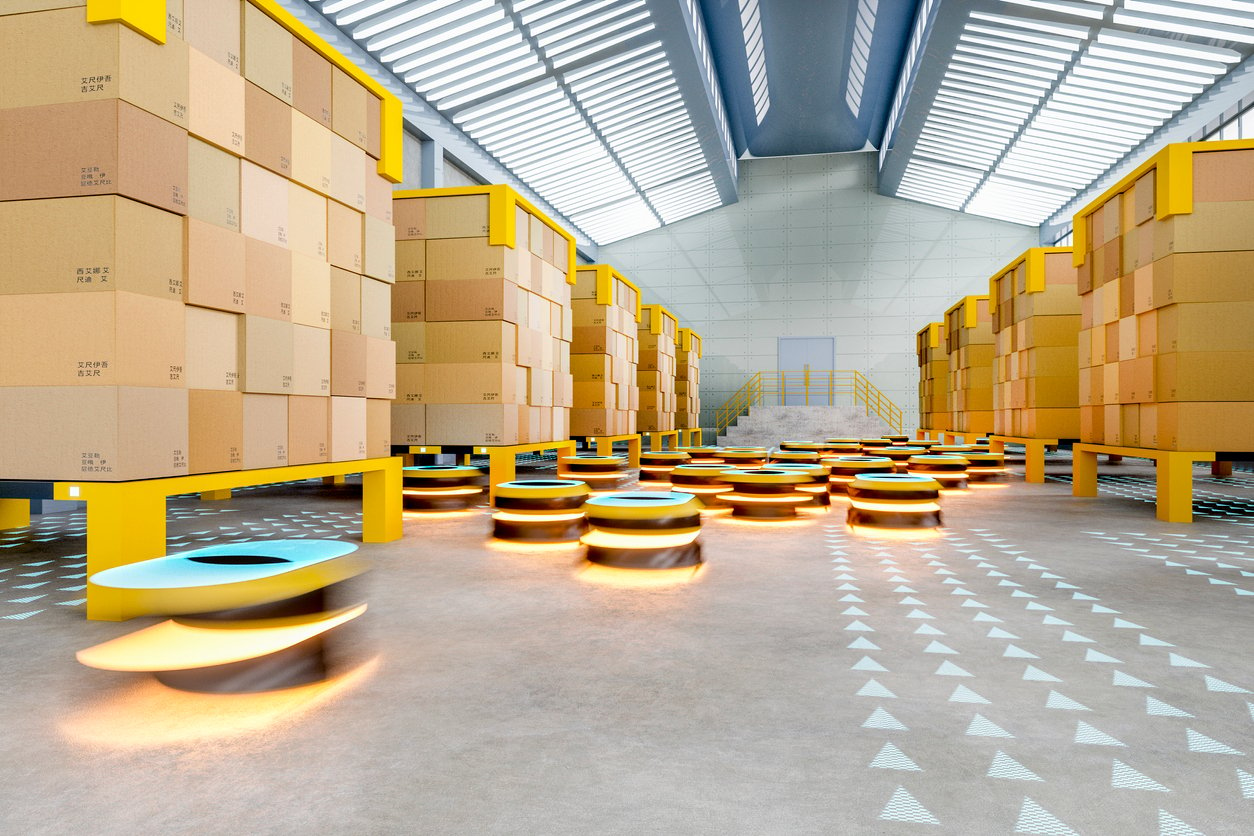
Blog
Autonomous mobile robots are a significant innovation in warehouse operations
Key takeaways:
- Autonomous mobile robots are smart robots that are more flexible and responsive with better navigational tools
- Locus Robotics deploys LocusBots, a type of AMR, that have started to work alongside humans safely
- Amazon also continues to test the safety and performance of AMRs so that warehouses keep becoming more efficient
- Connected warehouse equipment requires effective wireless network monitoring solutions
Today’s warehouses are changing rapidly with the incorporation of AI and automation tools. Robotics is now a huge sector, expected to reach nearly $210 billion by 2025. These facilities use robotics in the form of collaborative bots, sorters, pickers, transports, smart conveyors, and many other applications.
One innovation is particularly changing the way warehouses operate: the autonomous mobile robot (AMR). Let’s walk through how companies use and innovate AMRs, and what this means for warehouses now and in the future.
What is an AMR?
AMRs utilize robotics technology to create a more flexible option for a warehouse. They are smarter and more efficient than other types of robots, like automated guided vehicles, and can be used for many different cumbersome tasks.
Instead of depending on physical guides throughout the space, AMRs use smart sensors and processors to determine routes and move warehouse materials—they can sense obstacles in their path and avoid them. Many AMRs can actually learn as they go, remembering aspects of the environment around them, including locations and routes. These devices can also adapt their movement to be deployed in different areas from one day to the next.
Locus Robotics is one of the leading AMR solutions out there. The company’s intelligent automation solutions have been shown to boost productivity, reduce labor costs, and help companies scale. LocusBots work alongside humans safely and have an adaptable, lightweight design. These bots also deliver data reports and insights that help management make better decisions. Locus claims that their robotics solutions improve fulfillment productivity by two to three times.
Amazon improves its AMR safety
Another inarguable leader in robotics is Amazon, which has previously weathered some criticism over the safety of its machines. The company builds and designs robots that work with intelligent systems to improve warehouse operations, and Amazon now has around 350,000 robots working at their many U.S. sites. The company’s devices work next to human counterparts as well as completely independent of them.
This equipment moves products around all of the company’s fulfillment centers to increase productivity and keep costs low. AMRs and other robots are a significant factor behind Amazon's ability to deliver orders at record speeds.
Amazon uses AMRs in addition to smarter systems and software and machine learning to improve its warehouses. In a recent blog post, the company said that it continues to develop AMRs to create safer environments at its sites. They are testing these devices to see if they can navigate through warehouses with enhanced perception and safety solutions to work alongside more employees and take on bigger and bigger jobs.
What this means for the future
Some analysts worry that the introduction of AMRs and other robotics technologies will eliminate jobs in an already struggling economy. However, Amazon argues in its blog post that since the company started using robotics back in 2021, it's added over a million jobs around the globe and still deploy hundreds of thousands of robots. Nevertheless, the massive demand for online products accelerated by the pandemic has played a significant role in this growth.
We don't know whether these devices will eventually eliminate most warehouse jobs for humans. Despite Amazon’s recent numbers, one study claims that by 2030, robots could take over 20 million positions. At the same time, more of them will likely mean greater productivity, contributing to faster economic growth.
One thing is for sure in robotics: the industry will only continue to expand, and more smart devices and robots will be entering warehouses—and depending on consistent network connections—for years to come.
Why warehouses need better Wi-Fi monitoring
Warehouses now have far more connected devices moving throughout large spaces, whether they’re scanning, reporting, or receiving commands. Much of this equipment must stay connected to Wi-Fi at all times to keep processes moving. As a result, companies can't afford to fall behind in any part of the supply chain because of a poor wireless connection.
Wireless Network Monitoring from 7SIGNAL helps these organizations deal with issues quickly and avoid problems hitting end-users—robotic or human. Network engineers must have increased visibility into what's happening on the floor with connectivity at all times. And these insights also inform network design and expansion to accommodate growing connectivity requirements and more devices.
To learn more about wireless network monitoring, contact 7SIGNAL today.
7SIGNAL® is the leader in wireless experience monitoring, providing insight into wireless networks and control over Wi-Fi performance so businesses and organizations can thrive. Our cloud-based wireless network monitoring platform continually tests and measures Wi-Fi performance at the edges of the network, enabling fast solutions to digital experience issues and stronger connections for mission-critical users, devices, and applications. Learn more at www.7signal.com.